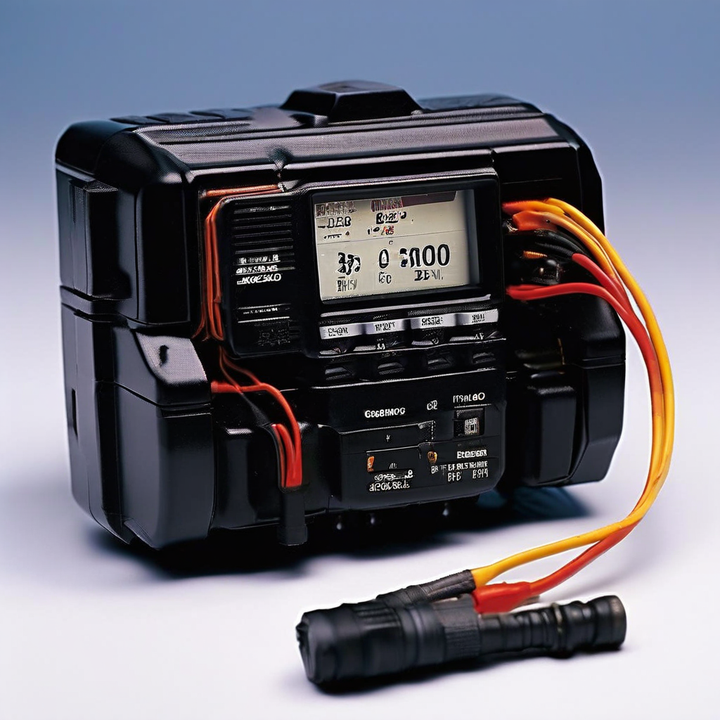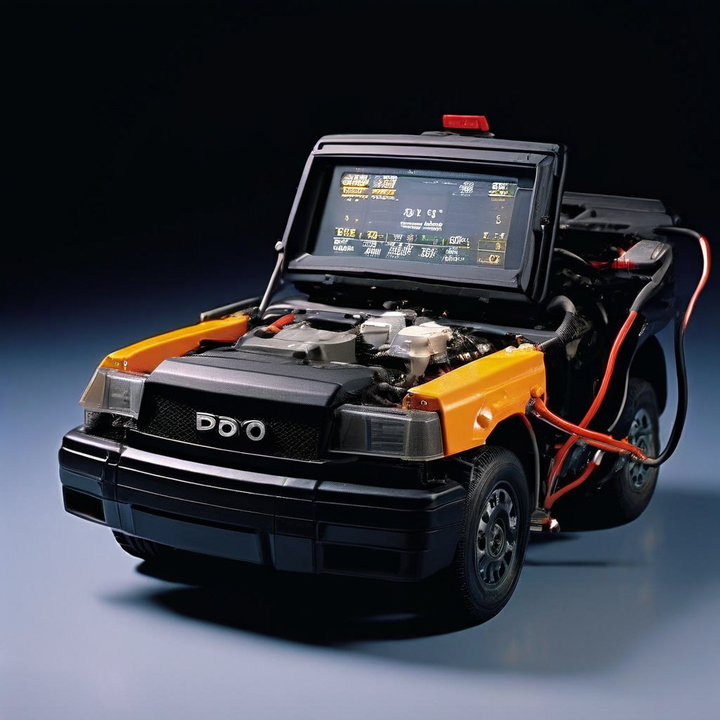


The P030F code is an OBD-II diagnostic trouble code that indicates a high voltage issue in the Ignition B control signal circuit. This circuit is crucial for the proper functioning of the ignition system, which is responsible for igniting the air-fuel mixture in the engine's cylinders. When this code is triggered, it can lead to engine misfires, poor performance, and increased emissions.
Faulty ignition coil
Damaged or corroded wiring and connectors
Malfunctioning engine control module (ECM)
Short circuits or open circuits in the ignition system
Faulty spark plugs or injectors
A faulty ignition coil can fail to provide the necessary spark, leading to misfires and triggering the P030F code.
Damaged wiring or connectors can cause intermittent or high resistance connections, resulting in voltage fluctuations.
A malfunctioning ECM can send incorrect signals to the ignition coil, causing high voltage issues.
| Cause | Description |
|---|---|
| Faulty ignition coil | Fails to provide necessary spark, leading to misfires |
| Damaged wiring/connectors | Causes intermittent or high resistance connections, resulting in voltage fluctuations |
| Malfunctioning ECM | Sends incorrect signals to the ignition coil, causing high voltage issues |
Diagnose the Issue: Use an OBD-II scanner to confirm the P030F code and check for any additional codes.
Inspect Wiring and Connectors: Visually inspect for damage, corrosion, or loose connections. Use a multimeter to test resistance and continuity.
Test the Ignition Coil: Use a diagnostic tool to monitor the ignition coil's input and output signals. Compare them to manufacturer specifications.
Replace Faulty Components: Replace any damaged wiring, connectors, or ignition coils as needed.
Regular Inspections: Periodically inspect the ignition system components for signs of wear or damage.
Clean Connections: Ensure all electrical connections are clean and free of corrosion.
Use Quality Parts: Use high-quality ignition coils, spark plugs, and wiring to prevent future issues.
| Repair Step | Description |
|---|---|
| Diagnose the Issue | Use an OBD-II scanner to confirm the P030F code and check for additional codes |
| Inspect Wiring and Connectors | Visually inspect for damage, corrosion, or loose connections; test resistance and continuity |
| Test the Ignition Coil | Monitor the ignition coil's input and output signals; compare to manufacturer specifications |
| Replace Faulty Components | Replace any damaged wiring, connectors, or ignition coils as needed |
Check Freeze Frame Data: Analyze the engine parameters at the time the code was set to identify potential causes.
Scan for Other Codes: Look for related codes that may indicate additional issues.
Inspect and Test Components: Follow the diagnostic steps to inspect and test the ignition system components.
Replace and Retest: Replace faulty components and clear the code. Test drive the vehicle to ensure the issue is resolved.
Regular Maintenance: Follow the manufacturer's recommended maintenance schedule for the ignition system.
Use Cleaner Fuel: Cleaner fuel can reduce the frequency of ignition system problems.
Monitor Electrical System: Regularly check the vehicle's electrical system for any signs of issues.
Routine Inspections: Regularly inspect the ignition coils, spark plugs, and wiring for signs of wear or damage.
Timely Repairs: Address any minor issues promptly to prevent them from escalating into major problems.
Quality Parts: Use OEM or high-quality aftermarket parts to ensure reliability and longevity.
| Preventive Measure | Description |
|---|---|
| Regular Maintenance | Follow the manufacturer's recommended maintenance schedule for the ignition system |
| Use Cleaner Fuel | Cleaner fuel can reduce the frequency of ignition system problems |
| Monitor Electrical System | Regularly check the vehicle's electrical system for any signs of issues |
Complex Diagnostics: Diagnosing electrical issues can be complex and may require specialized tools and knowledge.
Intermittent Issues: Intermittent electrical problems can be difficult to replicate and diagnose.
Cost of Repairs: Replacing ignition system components can be costly, especially if multiple parts are affected.
Vehicle-Specific Issues: Different makes and models may have unique ignition system configurations and common issues.
Professional Help: In some cases, seeking professional help may be necessary to accurately diagnose and repair the issue.
DIY Repairs: While some may advocate for DIY repairs, it is important to recognize the limitations and potential risks involved.
Cost vs. Quality: Some may opt for cheaper parts to save money, but this can lead to recurring issues and higher long-term costs.
Understanding the P030F code, its causes, repair techniques, and preventive measures is crucial for maintaining vehicle performance and avoiding costly repairs.
Regular maintenance and timely repairs are essential to prevent ignition system issues and ensure the longevity of your vehicle.
Don't let a check engine light disrupt your peace of mind. Stay proactive with your vehicle's maintenance, and address any issues promptly to keep your engine running smoothly and efficiently.
OBD-II Code P030F stands for "Ignition B Control Signal Circuit High," indicating a high voltage issue in the Ignition B control signal circuit.
Common symptoms include engine misfires, rough idling, poor acceleration, and increased emissions.
The code can be caused by a faulty ignition coil, damaged or corroded wiring and connectors, a malfunctioning engine control module (ECM), or faulty spark plugs.
To diagnose this code, use an OBD-II scanner to confirm the code and inspect the ignition coil, wiring, and connectors for damage or corrosion.
Driving with this code can be risky as it may cause further engine damage or lead to other problems. It is recommended to have your vehicle checked by a qualified mechanic as soon as possible.
The cost of fixing this code depends on the cause and the make and model of your vehicle. Generally, it can range from $100 to $1,000 or more.
While some issues related to this code can be fixed by a knowledgeable DIYer, it is usually best to leave the repairs to a trained mechanic.
You might need a scan tool, a multimeter, a test light, and some basic hand tools. Access to wiring diagrams and service manuals for your specific vehicle is also helpful.
Regular maintenance of your car’s ignition system, including checking the condition of spark plugs, ignition coils, and wiring, can help prevent this code from appearing.
If the code reappears, recheck all repairs and ensure no additional issues are present. It may also be necessary to consult a professional mechanic for further diagnosis.

Miguel started tinkering with car radios as a teenager, fascinated by the intricate dance of wires and circuits. This passion led him to pursue a career as an automotive electrician. For the past 10 years, Miguel has tackled everything from flickering headlights to mysterious electrical gremlins. He thrives on troubleshooting electrical problems and enjoys sharing his knowledge to empower car owners to understand their vehicles better.



